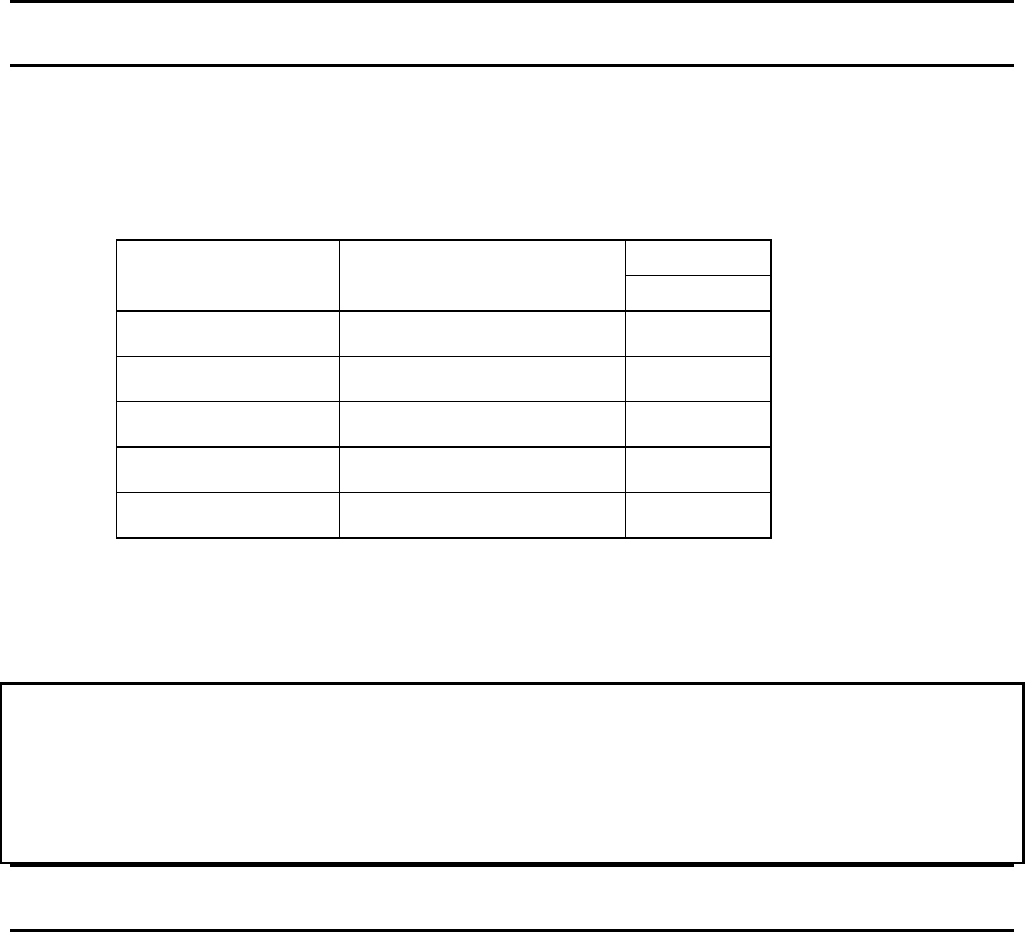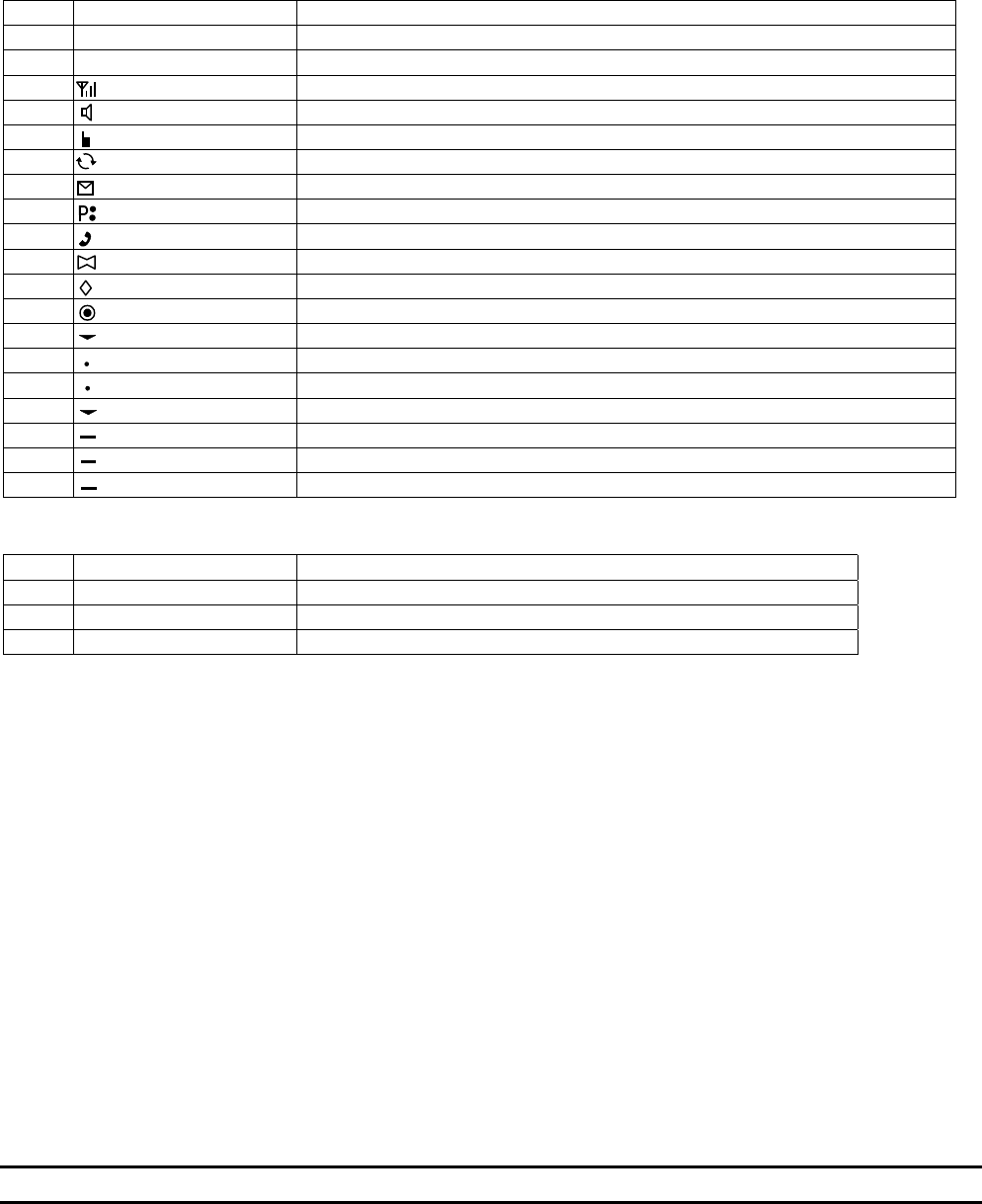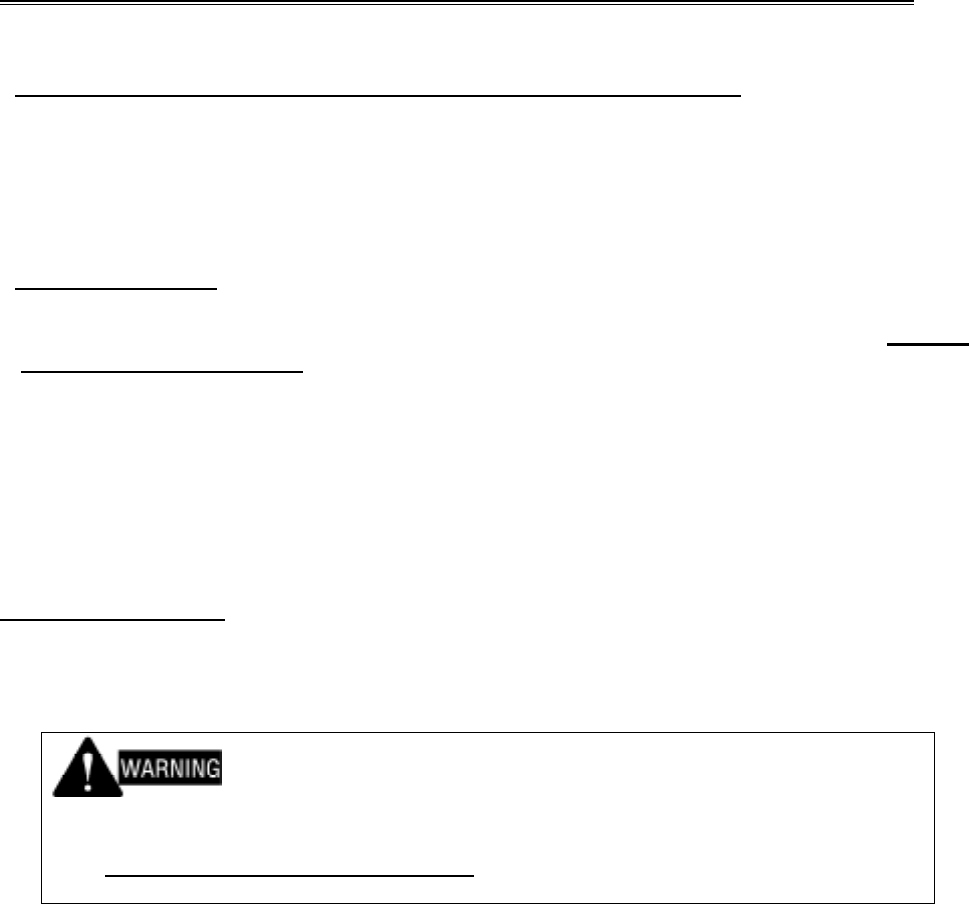JVCKENWOOD 37313120 UHF FM Transceiver User Manual INSTRUCTION MANUAL
JVC KENWOOD Corporation UHF FM Transceiver INSTRUCTION MANUAL
users manual

KENWOOD CORPORATION TK-8180-K2 FCC ID:K4437313120
IC:282F-37313120
INSTRUCTION MANUAL
THANK YOU!
We are grateful you chose KENWOOD for your land mobile radio applications. We believe this easy-to-use
transceiver will provide dependable communications to keep personnel operating at peak efficiency.
KENWOOD transceivers incorporate the latest in advanced technology. As a result, we feel strongly that you will
be pleased with the quality and features of this product.
MODELS COVERED BY THIS MANUAL
The models listed below are covered by this
•TK- 7180 : VHF FM Transceiver
•TK- 8180 : UHF FM Transceiver
NOTICES TO THE USER
WARNING:
♦ GOVERNMENT LAW PROHIBITS THE OPERATION OF UNLICENSED RADIO TRANSMITTERS WITHIN THE
TERRITORIES UNDER GOVERNMENT CONTROL.
♦ ILLEGAL OPERATION IS PUNISHABLE BY FINE AND /OR INPRISONMENT.
♦ REFER SERVICE TO QUALIFIED TECHNICIANS ONLY.
SAFETY:
It is important that the operator is aware of, and understands, hazards common to the operation of any
transceiver.
WARNING:
♦ EXPLOSI♦VE ATMOSPHERES (GASES, DUST, FUMES, etc.)
Turn off your transceiver while taking on fuel, or while parked in gasoline service stations. Do not carry spare
fuel containers in the trunk of your vehicle if your transceiver is mounted in the trunk area.
♦ INJURY FROM RADIO FREQUENCY TRANSMISSIONS
Do not operate your transceiver when somebody is either touching the antenna or standing within two to three
feet of it, to avoid the possibility of radio frequency burns or related physical injury.
♦ DYNAMITE BLASTING CAPS
Operating the transceiver within 500 feet (150m) of dynamite blasting caps may cause them to explode.
Turn OFF your transceiver when in an area where blasting is in progress, or where “TURN OFF TWO-WAY
RADIO” sighs have been posted. If you are transporting blasting caps in your vehicle, make sure they are
carried in a closed metal box with a padded interior. Do not transmit while the caps are being placed into or
removed from the container.
PRECAUTIONS
Please observe the following precautions to prevent fire, personal injury, and transceiver damage.
• Do not attempt to configure the transceiver while driving , it is too dangerous.
• Do not modify the transceiver for any reason.
• Do not expose the transceiver to long periods of direct sunlight, nor place it near heating appliances.
• Do not place the transceiver in excessively dusty, humid , or wet areas, nor on unstable surfaces.
• If an abnormal odor or smoke is detected coming from the transceiver, turn OFF the power immediately.
Contact your KENWOOD dealer.
FCC WARNING
This equipment generates or uses radio frequency energy. Changes or modifications to this equipment may cause
harmful interference unless the modifications are expressly approved in the instruction manual. The user could
lose the authority to operate this equipment if an unauthorized change or modification is made.

KENWOOD CORPORATION TK-8180-K2 FCC ID:K4437313120
IC:282F-37313120
INFORMATION TO THE DIGITAL DEVICE USER REQUIRED BY THE FCC
This equipment has been tested and found to comply with the limits for a Class B digital device, pursuant to Part
15 of the FCC Rules.
These limits are designed to provide reasonable protection against harmful interference in a residential
installation.
This equipment generates, uses and can generate radio frequency energy and, if not installed and used in
accordance with the instructions, may cause harmful interference to radio communications.
However, there is no guarantee that the interference will not occur in a particular installation. If this equipment
does cause harmful interference to radio or television reception, which can be determined by turning the
equipment off and on, the user is encouraged to try to correct the interference by one or more of the following
measures:
• Reorient or relocate the receiving antenna.
• Increase the separation between the equipment and receiver.
• Connect the equipment to an outlet on a circuit different from that to which the receiver is connected.
• Consult the dealer for technical assistance.
UNPACKING AND CHECKING EQUIPMENT
Note: The following unpacking instructions are for use by your
KENWOOD dealer, an authorized KENWOOD service facility, or the factory.
Carefully unpack the transceiver. We recommend that you identify the items listed in the following table before
discarding the packing material. If any items are missing or have been damaged during shipment, file a claim with the
carrier immediately.
♦ Supplied Accessories
Quantity
Item Part Number K
Instruction Manual B62-××××-×× 1
DC power cable E30-××××-×× 1
Fuse F15-××××-×× 1
Mounting bracket J29-××××-×× 1
Screw Set N99-××××-×× 1
PREPARATION
WARNING
Various electronic equipment in your vehicle may malfunction if they are not properly protected from the radio
frecuency
energy which is present while transmitting. Electronic fuel injection,anti-skid braking,and cruise control
systems are typical examples of equipment that may malfunction. If your vehicle contains such equipment,
consult the dealer for the make of vehicle and enlist his/her aid in determining if they will perform while
transmitting.
Note: The following preparation instructions are for use by your KENWOOD dealer,an authorized KENWOOD
service facility, or the factory.

KENWOOD CORPORATION TK-8180-K2 FCC ID:K4437313120
IC:282F-37313120
TOOLS REQUIRED
Note: Before installing the transceiver, always check how far the mounting screws will extend below the mounting
Surface. When drilling mounting holes, be careful not to damage vehicle wiring or parts.
The following tools are required for installing the transceiver:
• 6mm(1/4 inch) or larger electriic drill
• 4.2mm(5/32 inch) drill bit for the self-tapping screws
• Circle cutters
POWER CABLE CONNECTION
CAUTION
The transceiver operates in 12V negative ground systems only! Check the battery polarity and voltage of the
vehicle
Before installing the transceiver.
1 Check for an existing hole, conveniently located in the firewall, where the power cable can be passed through.
If no hole exists, use a circle cutter to drill the firewall, then install a rubber grommet.
2. Run the two- power cable leads through the firewall and into the engine compartment, from the passenger
compartment.
3 Connect the red lead to the positive (+) battery terminal and the black lead to the negative (-) battery terminal.
Locate the fuse as close to the battery as possible.
4 Coil and secure the surplus cable with a retaining band.
Be sure to leave enough slack in the cables so the transceiver can be removed for servicing while keeping the
power applied.
INSTALLING THE TRANSCEIVER
WARNING
For passenger safety,install the transceiver securely, using the supplied mounting bracket, so the transceiver will
not break loose in the event of a collision.
1 Mark the position of the holes in the dash by using the mounting bracket as a templete. Drill the holes, then
attach the mounting bracket using the supplied self-tapping screws.
Be sure to mount the transceiver in a location where the controls are within easy reach of the user and where
there is sufficient space at the rear of the transceiver for cable connections.
2 Connect the antenna and the supplied power cable to the transceiver.
3 Slide the transceiver into the mounting bracket and secure it using the supplied hex-headed screws.
4 Mount the microphone hanger in a location where it will be within easy reach of the user.
The microp hone and microphone cable should be mounted in a place where they will not interfere with the
safe operation of the vehicle.
CAUTION
When replacing the fuse in the DC power cable,be sure to replace it with a fuse of the same value.
Never replace a fuse with a fuse that has a higher value.
GETTING ACQUAINTED

KENWOOD CORPORATION TK-8180-K2 FCC ID:K4437313120
IC:282F-37313120
ORIENTATION
Functional and Operational specifications
1 ) Front Panel
Switch(Push type)
No. Name Description
1 DC Source Power On/Off
2 Left Up Programmable Default : Volume Up
3 Left Down Programmable Default : Volume Down
4 ∆ (Triangle) Programmable Default : None
5 S Programmable Default : Squelch Off Momentary
6 A Programmable Default : None
7 <B Programmable Default : CH/GID Down
8 C> Programmable Default : CH/GID Up
9 ■ (Square) Programmable Default : None
10 Right Up Programmable Default : Zone Up
11 Right Down Programmable Default : Zone Down
3 ) DISPLAY LCD
Volume Channel MoniNone None
Audio output Anten Power supply
Power

KENWOOD CORPORATION TK-8180-K2 FCC ID:K4437313120
IC:282F-37313120
LCD Display
No. Name Description
1 Dot Matrix(12digits) Alphanumeric display Channel/GID display Zone display
2 Dot Matrix(3digits) Channel/GID display Zone display OST list number display
3 Signal strength indicator
4 Monitor on display
5 Talk around display
6 Scan display
7 Message stack display
8 Priority channel 1/2 display
9 Telephone ID display
10 Horn alert display
11 Option board display
12 Public address display
13 Zone add display
14 Auto Recording Display on VGS-1 option
15 Auto Reply Message Display on VGS-1 option
16 CH/GID add display
17 AUX A display
18 AUX B display
19 OST display
TX/BUSY INDICATION
No. Name Description
1 Red TX display
2 Green Busy display
3 Orange Call display
OPERATING BASICSATING
♦ Switching Power ON/OFF
Press the switch to switch the transceiver ON.
Press and hold the switch for approximately 1 second to switch the transceiver OFF.
♦ Adjusting the Volume
The Volume Up/Down SW control to adjust the volume. You can adjust the volume up sw to increases the volume and
the volume down sw to decreases it.
♦Selecting a Channel
The Channel Up/Down SW to select a channel.
The channel up sw the channel number increases and The channel down sw decreases it.
♦Transmitting
Note: Before transmitting, first monitor the channel to make sure it is not already in use.
1 Select your desired channel.
• If the channel is busy, wait until it becomes free.
1 Press the microphone PTT switch and speak into the microphone. Release
the PTT switch when you have finished speaking.
• For best sound quality at the receiving station, hold the microphone approximately 1.5 inches (3~4cm) from
your mouth.
KENWOOD CORPORATION TK-8180-K2 FCC ID:K4437313120
IC:282F-37313120
♦ Receiving
1 Select your desired channel.
2 When you hear a signal, readjust the volume level if necessary.
2 Respond to the call as described in step 2 of “TRANSMITTING”,above.
AUXILIARY FEATURES
♦ Time-out Timer (TOT)
The purpose of the Time-out Timer is to prevent any caller from using a channel for an extended period of time. If you
continuously transmit for a period of time that exceeds the programmed time, the transceiver will stop transmitting and
an alert tone will sound. To stop the tone, release the PTT switch.
Your dealer can program a warning function to alert you before the TOT expires. Continuously transmitting for the
specified by your dealer will cause the warning tone to sound.

MANDATORY SAFETY INSTRUCTIONS TO INSTALLERS AND USERS
• Use only manufacturer or dealer supplied antenna.
• Antenna Minimum Safe Distance: 120 cm (4 feet), 50% duty Cycle.
• Antenna Gain: 0 dBd referenced to a dipole.
The Federal Communications Commission has adopted a safety standard for human
exposure to RF (Radio Frequency) energy which is below the OSHA (Occupational Safety
and Health Act) limits.
• Antenna Mounting: The antenna supplied by the manufacturer or radio dealer must not be
mounted at a location such that during radio transmission, any person or persons can
come closer than the above indicated minimum safe distance to the antenna, i.e. 120 cm
(4 feet) , 50% duty Cycle.
• To comply with current FCC RF Exposure limits, the antenna must be installed at or
exceeding the minimum safe distance shown above, and in accordance with the
requirements of the antenna manufacturer or supplier.
• Vehicle installation: The antenna can be mounted at the center of a vehicle metal roof or
trunk lid, if the minimum safe distance is observed.
• Base Station Installation: The antenna should be fixed-mounted on an outdoor permanent
structure. RF Exposure compliance must be addressed at the time of installation.
Antenna substitution: Do not substitute any antenna for the one supplied or recommended
by the manufacturer or radio dealer.
You may be exposing person or persons to excess radio frequency radiation. You may
contact your radio dealer or the manufacturer for further instructions.
Maintain a separation distance from the antenna to person(s) of at least
120 cm (4 feet) , 50% duty Cycle.
“This transmitter is authorized to operate with a maximum duty factor of 50%, in typical
push-to-talk mode, for satisfying FCC RF exposure compliance requirements.”
You, as the qualified end-user of this radio device must control the exposure conditions of
bystanders to ensure the minimum separation distance (above) is maintained between the
antenna and nearby persons for satisfying RF Exposure compliance. The operation of this
transmitter must satisfy the requirements of Occupational/Controlled Exposure
Environment, for work-related use, transmit only when person(s) are at least the minimum
distance from the properly installed, externally mounted antenna. Transmit only when
people outside the vehicle are at least the recommended minimum lateral distance away
from the antenna/vehicle